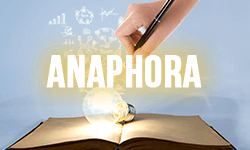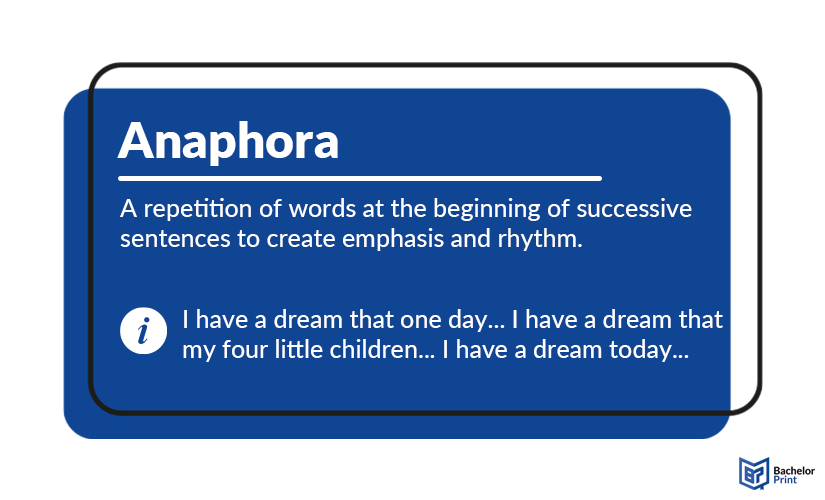
Your knowledge is what makes your work so great. Your writing is what will determine your grade. Your thesis will get you to your future. These sentences have one thing in common, they share the same beginning. This stylistic device is called anaphora. While it may not be used in academic writing very often, it can still be beneficial from time to time. In the following article, we will explain this stylistic device, its use, and examples to help you make the most out of your writing.
Definition: Anaphora
Anaphora, also called anaphor, repeats one or more words at the beginning of two or more sentences in a row, or even within one sentence. Between those repetitive phrases, there can and most often will be small variations. The primary purpose of this stylistic device is to emphasize a word or phrase and create a sense of meaning. The opposite would be an epistrophe, meaning that there the repeated phrase or word stands at the end of the sentence.

- ✓ 3D live preview of your individual configuration
- ✓ Free express delivery for every single purchase
- ✓ Top-notch bindings with customised embossing

Use and purpose
When using anaphora, there are only two rules: The same word or sequence has to be repeated at the beginning of the sentence, and it has to create a sense of meaning. The latter can be rather subjective and individual in every case, which is why the anaphoric sentences need to be related by content too. The following examples should clarify this aspect.
Both examples technically include an anaphora. The first one, however, sounds plain and boring, since it lacks tension, which could be gained by varying the first words of the sentences. The second example makes use of it, emphasizing how desperately she searched for those cookies.
Anaphoras can not only serve to emphasize certain words but also structure or rhythmize texts. They are mostly used in literature, especially poetry, in speeches, and in advertisements.
Literature, poetry, and songs
In literature, poetry, and songs, it is widely used to rhythmize the text, keep a consistent meter, emphasize syllables, or create an impression of increase.
Speeches
In speeches, anaphoras are often used to emphasize a specific point or get emotionally closer to the people it is directed to. It lends weight to the words spoken and kindles emotions in the listener, as well as ensures a catchy speech rhythm.
Adverdisement
In advertisements, anaphora is primarily used to make it easy to remember, but also to emphasize, either the product or attributes associated to it.
Anaphora and other stylistic devices
Anaphora can be compared to quite a few other stylistic devices, so it is important to know the similarities and differences. While the most common confusion happens with alliteration, other rhetorical devices could get mixed up.
Alliteration
Alliteration refers to consecutive words starting with the same letter.
Epistrophe
Epistrophe could be considered the counterpoint to anaphora, for it is a repetition of a word or phrase at the end of a sentence.
Symploce
Symploce is a combination of anaphora and epistrophe, meaning the sentences start and end with the same words or phrases.
Anadiplosis
Anadiplosis refers to a phrase that ends one sentence and immediately starts the next.
FAQs
A very popular example of anaphora is Martin Luther King’s “I Have a Dream” speech:
“I have a dream that one day this nation will rise up and live out the true meaning of its creed. I have a dream that one day on the red hills of Georgia, the sons of former slaves and the sons of former slave owners will be able to sit down together at the table of brotherhood.”
Anaphora repeats the same word or sequence at the beginning of the following sentences, while alliteration repeats the same letter at the beginning of the following words.
Anaphora is a repetition, but a special kind of it. Used in the wrong way, anaphora can make a text sound boring and ineloquent. This is why in academic writing you often do not use anaphoras.
To use anaphora, you need the same repetitive word or sequence at the beginning of the following sentences, and there has to be an intention behind it. If there is no sense of meaning, it may sound plain and not very articulate.
